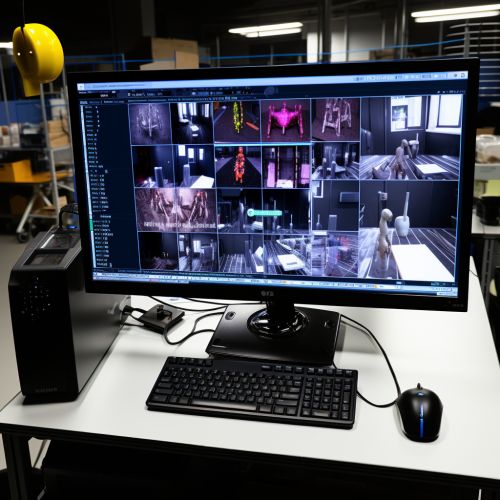You Only Look Once
Overview
"You Only Look Once" (YOLO) is a real-time object detection system that represents a novel approach to object detection. Unlike traditional methods that involve running a classifier on various parts of an image and then combining the results, YOLO frames object detection as a regression problem to spatially separated bounding boxes and associated class probabilities. This approach allows the system to process images in real-time, making it a popular choice for applications that require real-time detection, such as autonomous driving and video surveillance.


Architecture
The architecture of YOLO is relatively simple compared to other object detection systems. It consists of a single convolutional network that simultaneously predicts multiple bounding boxes and class probabilities for those boxes. The network divides the input image into a grid. If the center of an object falls into a grid cell, that grid cell is responsible for detecting that object.
Each grid cell predicts a fixed number of bounding boxes. A bounding box is defined by its center coordinates (x, y), its width and height (w, h), and a confidence score. The confidence score reflects how confident the model is that the box contains an object and how accurate it thinks the box is.
In addition to the bounding box predictions, each grid cell also predicts a class probability. This probability is conditioned on the grid cell containing an object. In other words, the grid cell doesn't care about the class of the object if it doesn't think there's an object in the first place.
The YOLO architecture is end-to-end trainable, meaning that it can be trained directly on image pixels and class labels. This makes it a unified model, as opposed to systems that require separate models for different parts of the detection process.
Performance
YOLO is known for its speed and efficiency. It can process images in real-time, achieving frame rates of up to 45 frames per second on a modern GPU. This is significantly faster than other object detection systems, such as Region-based Convolutional Neural Networks and Fast R-CNN, which can only process a few frames per second.
In terms of accuracy, YOLO performs comparably to other state-of-the-art object detection systems on standard benchmark datasets like PASCAL Visual Object Classes and Common Objects in Context. However, it tends to make more localization errors, meaning that it's less accurate at drawing the bounding boxes around the objects.
One of the reasons for YOLO's high speed is that it looks at the entire image at once during test time, hence the name "You Only Look Once". This is in contrast to sliding window and region proposal-based techniques, which look at different parts of the image separately.
Variants and Improvements
Since the original YOLO was proposed, there have been several improvements and variants developed to address its limitations. These include YOLOv2 (also known as YOLO9000), YOLOv3, and YOLOv4.
YOLOv2 introduced several new features to improve both speed and accuracy. These include multi-scale training, a new anchor box mechanism to predict bounding boxes, and a new network architecture called Darknet-19.
YOLOv3 further improved the detection accuracy by introducing three different scales of detection and three different sizes of anchors for each scale. It also used a new network architecture called Darknet-53, which is deeper and has more layers than Darknet-19.
YOLOv4 introduced several more improvements, including the use of Mish activation functions, CIOU loss function, and a new backbone network called CSPDarknet53.
Applications
YOLO has been used in a wide range of applications that require real-time object detection. These include autonomous driving, where it can be used to detect other vehicles, pedestrians, and obstacles on the road. It's also used in video surveillance to detect and track people and objects. Other applications include robotics, where it can be used for tasks like object manipulation and navigation, and augmented reality, where it can be used to overlay digital information on real-world objects.
